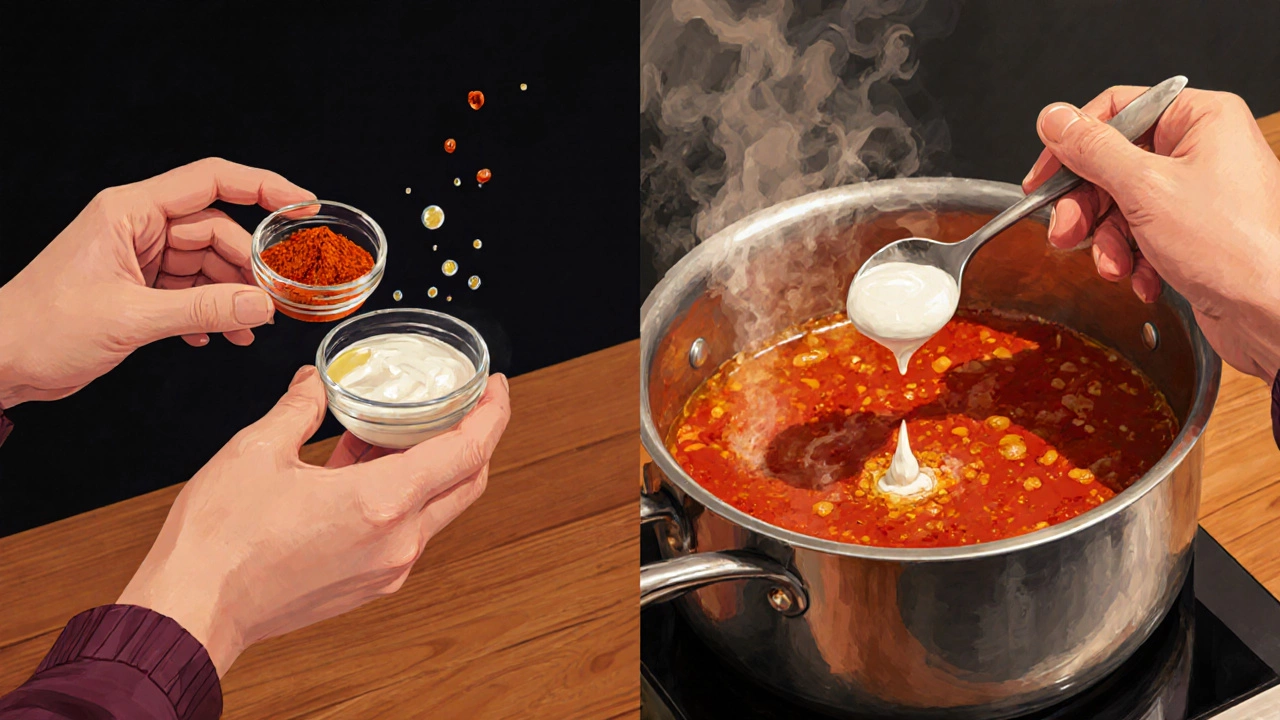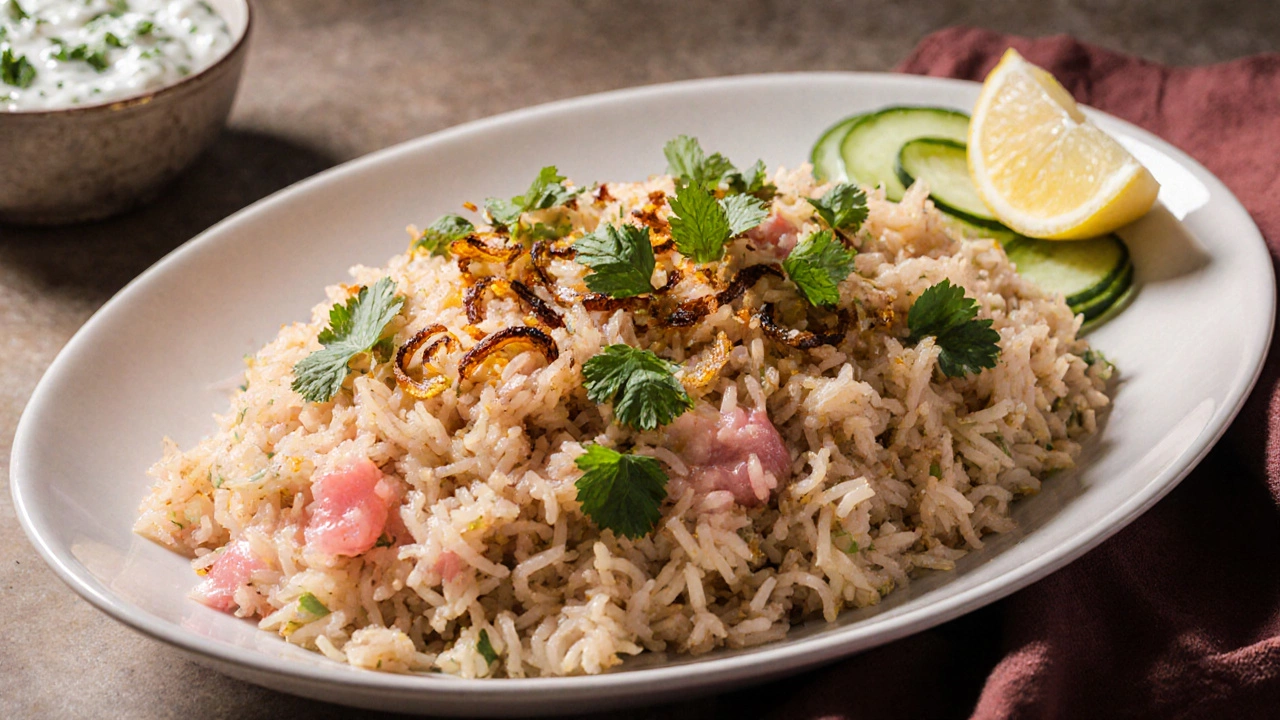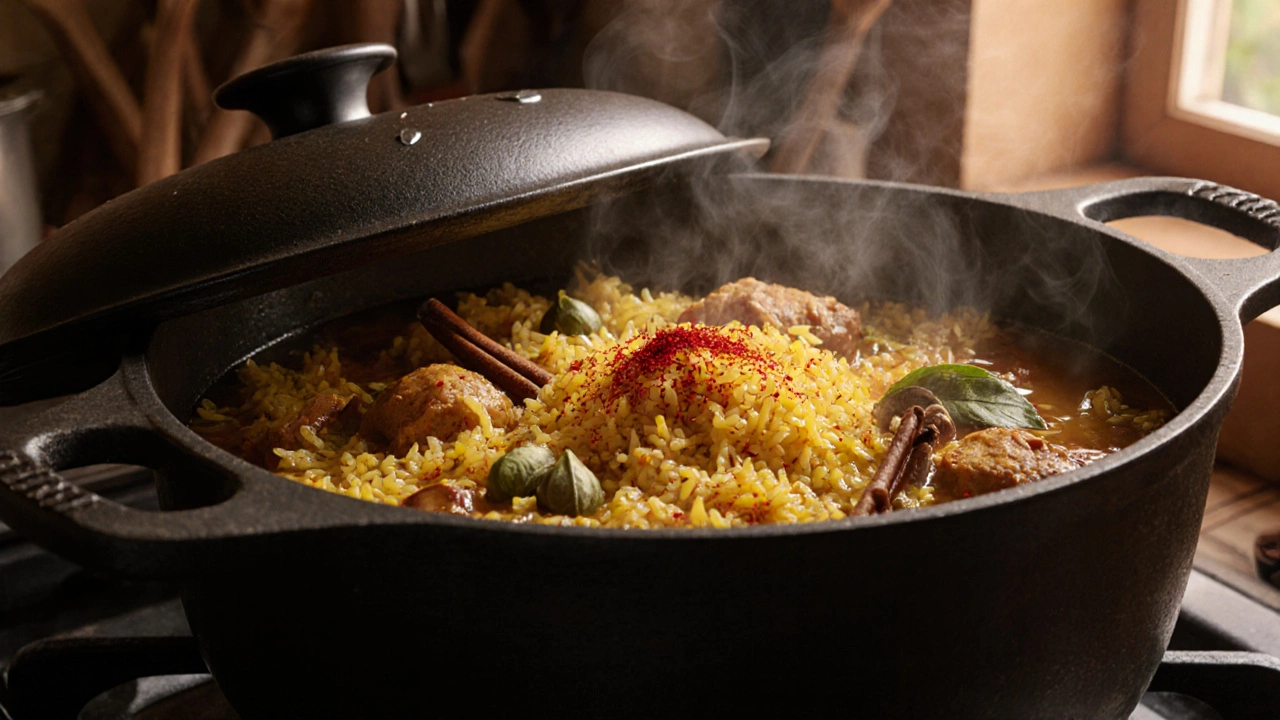Biryani Spice Balance Calculator
Adjust Your Biryani Spice Level
When you crave a fragrant biryani is a layered rice dish that blends basmati, meat or vegetables, and a bold spice mix. Getting the heat just right can be tricky, but a few simple tricks let you balance spice in biryani without losing its signature zing.
Why Spice Balance Matters
Too much heat can mask the subtle perfume of cloves, cardamom, and saffron, while too little leaves the dish flat. The ideal balance lets each aromatic note shine, creating a harmonious bite that keeps diners coming back.
Understanding the Core Spice Players
Most biryani recipes rely on a handful of key spices. Knowing their heat contribution helps you tweak the bowl on the fly.
- Garam masala is a warm, aromatic blend of cinnamon, cloves, cardamom, and nutmeg. It adds depth without burning the palate.
- Chili powder is the primary heat source. Its potency varies by brand and region.
- Red chili flakes give you fine‑grained control for a quick heat boost.
- Yogurt adds creaminess and mellows excess heat through its natural acidity.
- Saffron lends a luxurious aroma and color, but does not affect spiciness.
- Cardamom imparts a floral lift that can offset sharp chili notes.
Step‑by‑Step Guide to Tuning Spice Levels
- Start with a base broth. Cook your onions, garlic, and ginger in ghee, then add a measured amount of chili powder (usually 1‑2 tsp for a 4‑person batch). Record the amount for future reference.
- Layer aromatics. Toss in garam masala, cardamom pods, cinnamon sticks, and bay leaves. These give flavor depth that can mask a little extra heat.
- Test the broth before rice. Take a spoonful, let it cool, and taste. If it feels too hot, move to the next step.
- Cool the heat. Stir in 2‑3 tbsp of plain yogurt or a splash of coconut milk. The dairy’s protein binds capsaicin, softening the burn.
- Adjust with acidity. A teaspoon of lemon juice or a few diced tomatoes can brighten the flavor and further tame spiciness.
- Finish with fresh herbs. Sprinkle chopped cilantro or mint just before serving. Fresh herbs add a cooling contrast.

Quick Fixes When Your Biryani Is Too Spicy
Even seasoned cooks sometimes overshoot. Here are five rescue tactics you can apply while the biryani steams.
- Add more rice. Stir in cooked, plain basmati rice to dilute the heat. It also stretches the dish for extra servings.
- Mix in potatoes. Boiled, peeled potatoes absorb chili oil. Cut them into bite‑size cubes and fold them in.
- Incorporate dairy. Swirl in a dollop of plain yogurt, a splash of cream, or a knob of butter. The fat coats the tongue, reducing perceived heat.
- Balance with sweetness. A teaspoon of sugar or a drizzle of honey can round off an overly sharp bite.
- Serve with cooling sides. Offer cucumber raita, sliced cucumber, or a simple salad with a citrus vinaigrette on the side.
Choosing the Right Chili for Your Biryani
Not all chilies are created equal. Below is a quick comparison of the most common options.
| Chili Type | Scoville Range (SHU) | Typical Use in Biryani |
|---|---|---|
| Bird’s Eye (Thai) Chili | 50,000‑100,000 | Fresh chopped or whole; adds sharp bite |
| Green Chili (Indian) | 30,000‑50,000 | Slit and added to the broth; moderate heat |
| Kashmiri Chili Powder | 1,000‑2,000 | Provides color with mild heat; ideal for balance |
| Smoked Paprika | 500‑1,000 | Adds smoky depth without much heat |
| Red Chili Flakes | 30,000‑40,000 | Quick heat boost during layering |

Pro Tips for Consistently Perfect Spice Balance
- Measure, don’t guess. Use a kitchen scale or measuring spoons for chilies, especially when trying a new brand.
- Toast whole spices. Briefly frying whole cardamom, cloves, and cinnamon releases oils that mellow the overall heat.
- Keep a spice journal. Note the exact quantities, brands, and any adjustments you made. Over time you’ll develop a personal heat baseline.
- Use tempered turmeric. Adding a pinch of turmeric after the chilies have cooked reduces bitterness that can make heat feel harsher.
- Rest before serving. Let the cooked biryani sit covered for 10‑15 minutes. The flavors meld and the perceived spiciness often drops.
Frequently Asked Questions
Can I use fresh chilies instead of powder?
Absolutely. Fresh chilies give a brighter, more immediate heat. Slice them thinly and add them with the onions so they soften before the rice goes in. Adjust the quantity based on the pepper’s Scoville rating.
Why does my biryani taste hot even after adding yogurt?
If the chili concentration is extremely high, dairy can only soften-not eliminate-the burn. In that case, add more neutral elements (plain rice, potatoes) and a splash of lemon juice to further balance the palate.
Is Kashmiri chili powder safe for people who don’t like heat?
Kashmiri chili powder is prized for its vivid red color and very mild heat (around 1,000‑2,000 SHU). It’s an excellent choice for a visually striking biryani that stays gentle on the tongue.
How long should I let the biryani rest before serving?
Cover the pot and let it sit off the heat for 10‑15 minutes. This resting period allows the steam to finish cooking the rice evenly and lets the flavors settle, giving a more balanced spice perception.
What side dishes help tame a spicy biryani?
Cool raita (yogurt mixed with cucumber, mint, and a pinch of salt), simple cucumber salad, or a fresh mango chutney all provide cooling contrast and complement the biryani’s rich spices.
With these methods in your cooking toolbox, you’ll never have to fear an over‑spiced biryani again. Adjust, taste, and enjoy the perfect harmony of heat, aroma, and flavor in every bite.
